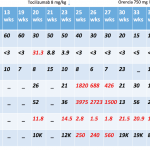Dr. Chan, who spent 18 years at Scripps, appreciated the depth of Dr. Tan’s knowledge of the literature. “Young people read the literature and believe that experiments have already been done and results already known. But [Dr. Tan] has a better sense of what has been published and how reliable those results may be. He knows there are still many unanswered questions that a young investigator is not aware of.”
Dr. Tsay, founder and director of the Institute of Immunology at Chung Shan Medical University in Taichung, Taiwan, and president of the Taiwan Rheumatology Association, echoes Dr. Chan’s impressions. He first met with his mentor during an International Congress of Immunology (ICU) meeting held in Japan in 1983, and six months later he traveled to Scripps to begin his own postdoctoral studies. He recalls that Dr. Tan “always taught us you have to go deeper in research.”
In his 24 years as head of the disease center, Dr. Tan trained close to 100 fellows who came from all over the world and who worked in many different disciplines, not just rheumatology. “I was always impressed,” says Dr. Mannik, “by how he was able to recruit and train young investigators who had a talent for research—and beyond that, he formed lasting friendships with former trainees, regardless of where they came from.”
Not all of the fellows who studied there become independent investigators, Dr. Chan recalls. “I remember, after four or five years [at Scripps] he told me, ‘You have to try hard, and I think you can make it.’ The way he said, ‘I think you can make it,’ made me think more seriously about what is possible. And when he said it was possible, I was encouraged to try harder.”
Society Involvement
Dr. Tan’s measured demeanor and ability to examine context propelled him into positions of importance within the field as well. In 1980–1981, at the request of Daniel J. McCarty, MD, president of the American Rheumatism Association [ARA; now the ACR], Dr. Tan served as chair of a committee charged with updating and revising the 1971 ARA criteria for classification of SLE. With colleagues James Fries, MD, and Dennis McShane, MD, among others, Dr. Tan met at Stanford, home of the Arthritis, Rheumatism and Aging Medical Information Systems (ARAMIS) database. Working efficiently, the committee published the revised criteria, which included antibodies to the Sm antigen, in 1982.4 The criteria are used to this day.


